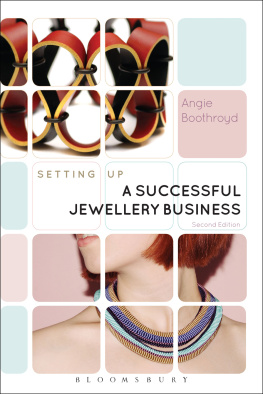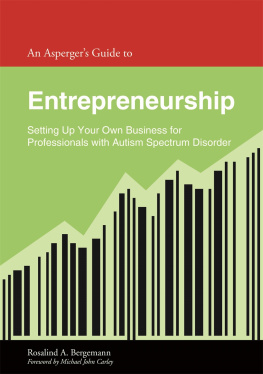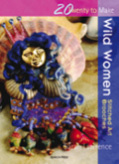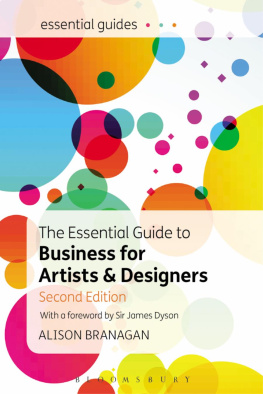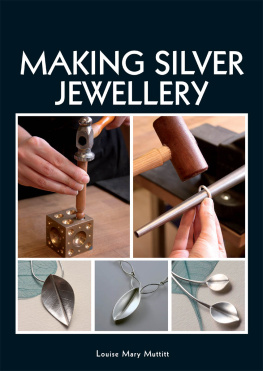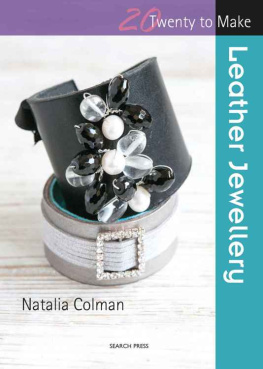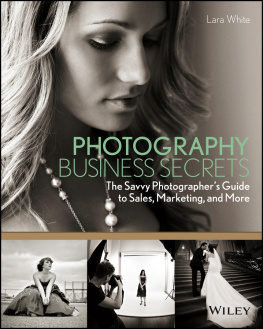Setting up a successful
jewellery business
Setting up a successful
jewellery business
Second Edition
Angie Boothroyd ma(rca)
Bloomsbury Academic
An imprint of Bloomsbury Publishing Plc
Contents
Many thanks to everyone who helped make the first and second editions of this book happen: Davida Forbes, Ariadne Goodwin, Molly Beck and Clara Herberg at Bloomsbury, and Susan James at A&C Black (who talked me into the idea in the first place). Thanks to Ellen OHara and Janice Hosegood at Cockpit Arts, and to Nigel Jackson who generously provided his wisdom in the area of intellectual property law. Finally, a big thank you to all the jewellers and craftspeople who provided their input and expertise including Alison Flanders, Nicola Monaghan, Selina Stiles, Andrea Kourris, Liz Willis, Sonia Cheadle, Amanda Doughty and Zack Wetherby, and everyone who provided feedback on the first edition in order to make the second edition even better. I sincerely hope that all who read this book benefit from the combined expertise of these and other people who have directly or indirectly contributed.
Who is this book for?
This book is for anyone who designs and makes jewellery and wants to earn money doing it. If you are just setting up your business and dont know where to start when it comes to pricing, selling or promoting your work, then this is an ideal place to learn. Or maybe youre already an established designer/maker, but arent entirely confident of your business skills? Perhaps you juggle a jewellery business alongside another job or career? If so, this book is also perfectly suited to your needs.
Whether you want to sell directly to the public, or through shops and galleries, this book will give you the tools you need to help you price, promote and sell your work.
It will also be helpful if you are considering opening a retail premises. However, it does not cover the complicated business of opening a shop; for that, you will also need a book specifically aimed at shopkeepers, of which there are many on the market.
If you are a jewellery designer but not a maker, and plan on outsourcing the manufacture of your products, you will also find this book useful, although some chapters will not apply directly to you. A look at the chapter headings will show you how you will benefit.
What to expect
This book is not about making jewellery. Its about turning your jewellery into a successful business. It is largely based on my personal experience, and therefore addresses many unwritten rules and industry-specific guidelines that you wont find in more general business books. All the fundamental skills required to run a small jewellery business are included here, along with worksheets so you can put what youve learned into practice.
About the author
My first career was in graphic design. After three years working for a design studio I knew I had the confidence, and the design skills, to strike out on my own. Sadly, I knew nothing about business. I ended up working harder than ever before, for less money, and on increasingly mundane projects. The business was ultimately a failure.
I retrained as a jeweller, first doing a technical course and then completing a Master of Arts at the Royal College of Art. Having decided to become self-employed yet again, I set up my workshop immediately after graduating, and it was a success. Why? This time, I knew a bit about business. Only a little, but it went a long way.
Towards the end of the MA programme we spent a few days discussing professional practice in other words, business. I can clearly recall the day that a guest speaker came in to explain how to create a cash flow forecast; it was a revelation. I couldnt believe Id attempted to run a business for years without ever using this powerful, yet basic, business tool. No wonder Id failed!
After graduating, I carried on educating myself at every opportunity. When I first set up my workshop there were many seminars in London, aimed at helping new craft businesses to get started. I made a habit of attending these, and did so until I felt I had collected the essential business knowledge I needed to survive. Of course, I was simultaneously learning on the job. And because Id made friends with lots of other jewellers, both at college and in neighbouring studios, I learned a lot from them as well.
And so, with this book, I have attempted to distil all of my education, whether from formal seminars, personal experience or chance conversations, into a concise and easy-to-use volume.
How to use this book
If you are starting a business from scratch, then please read through the entire book before you do anything else. Chapters inevitably cross-reference each other, and everything will make much more sense once you have digested it as a whole.
If you are already in business you may wish to jump into the chapters that are of particular relevance to you, but of course I would advise you to read the entire book at some point, as you may just stumble on some hidden gems you didnt know you were looking for.
At the back of the book, youll also find an appendix of companies, people, associations and exhibitions which I hope will serve as a useful reference tool for years to come.
So, youve decided to start a jewellery business. Whether its going to be full-time or part-time, whether operating from a fully-fitted workshop or your garage or kitchen table, there are certain basics you need to take care of at the outset.
Decide on a legal structure
In legal terms, there are several types of business. Most designer/makers set up as sole traders; in other words, they are self-employed. If you are setting up a business with somebody else, you will need to form a partnership, or you may choose to trade as a limited company. It is always best to seek the advice of an accountant on this subject, as they can advise on the most suitable and tax-efficient structure for you; if you are considering anything other than a simple sole proprietorship, you will certainly need an accountants advice. Also refer to the small business advice section of your governments website for further information.

The options for the legal structure of your business will vary slightly, depending on your country of residence, but they are likely to include:
Sole trader
Most makers choose this option as it is the most straightforward. All you need to do is to inform the government of your sole-trader status, and start trading. In the US (where it is also called sole proprietorship), most states will ask you to file a fictitious name certificate if the name of your business is something other than your own name. Probably the biggest drawback to being a sole trader is the fact that your business and personal assets are considered as one in the eyes of the law. In other words, if your business were to go bust, you would be personally liable, and therefore your personal assets could be at risk.
Partnership
A partnership is still relatively straightforward in that it consists of two or more self-employed people running a business together. Again, personal and business assets are not legally separate, so there is a risk to your personal possessions if the business fails.
Limited liability partnership
This is similar to a partnership but with added legal protection in terms of how much finance each partner has contributed to the business.

